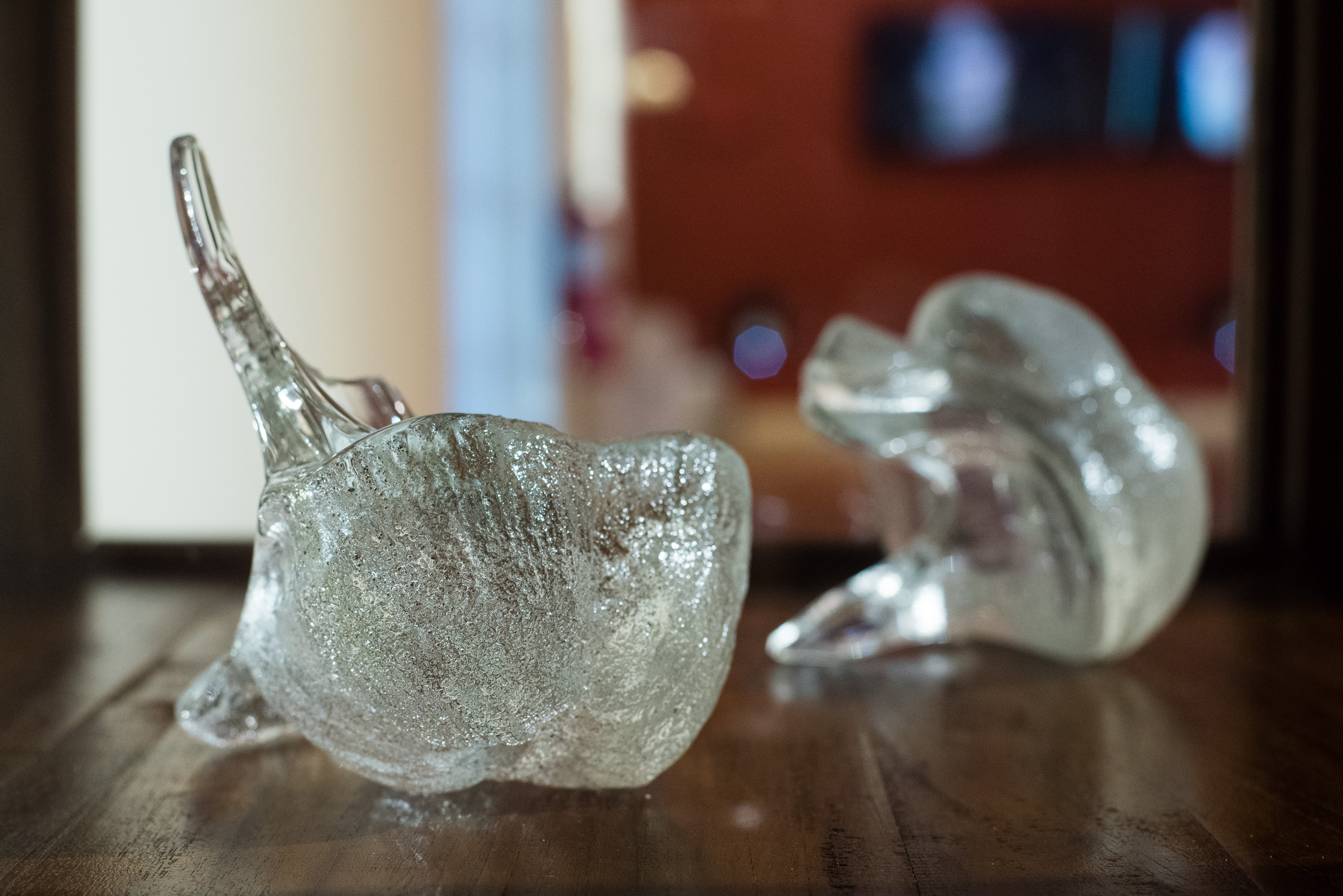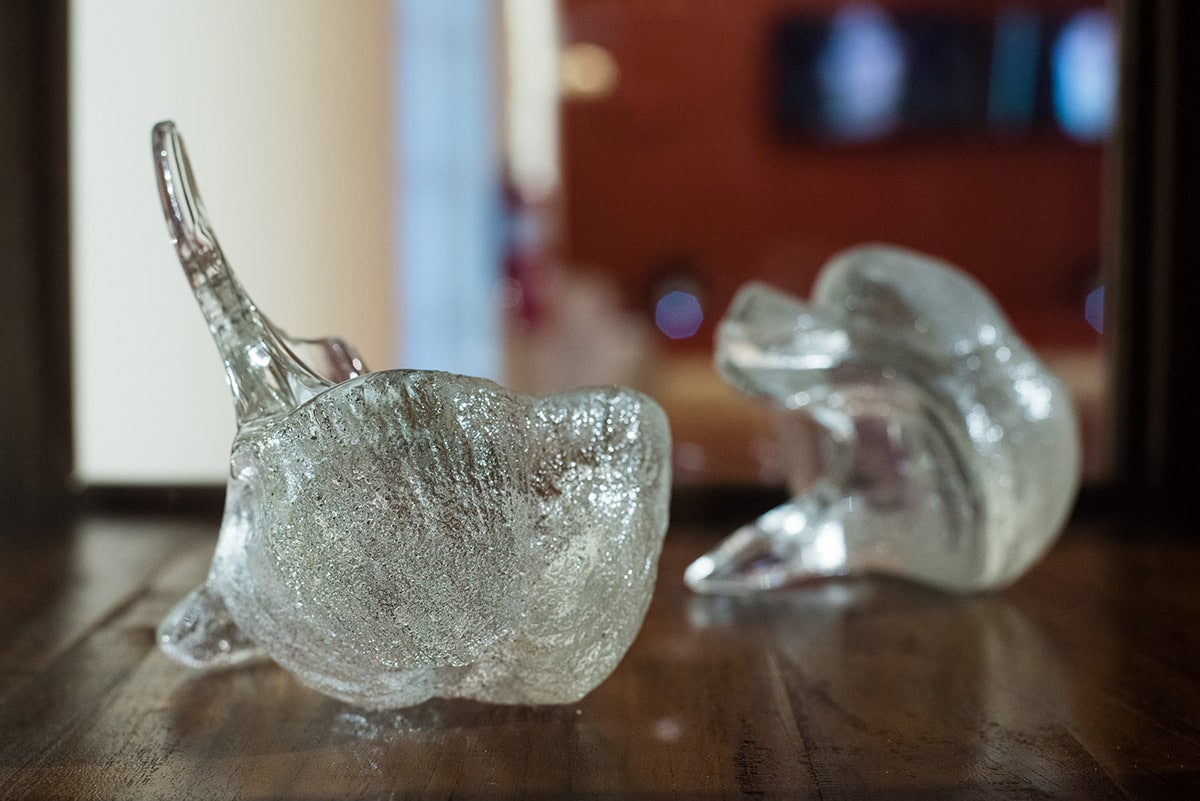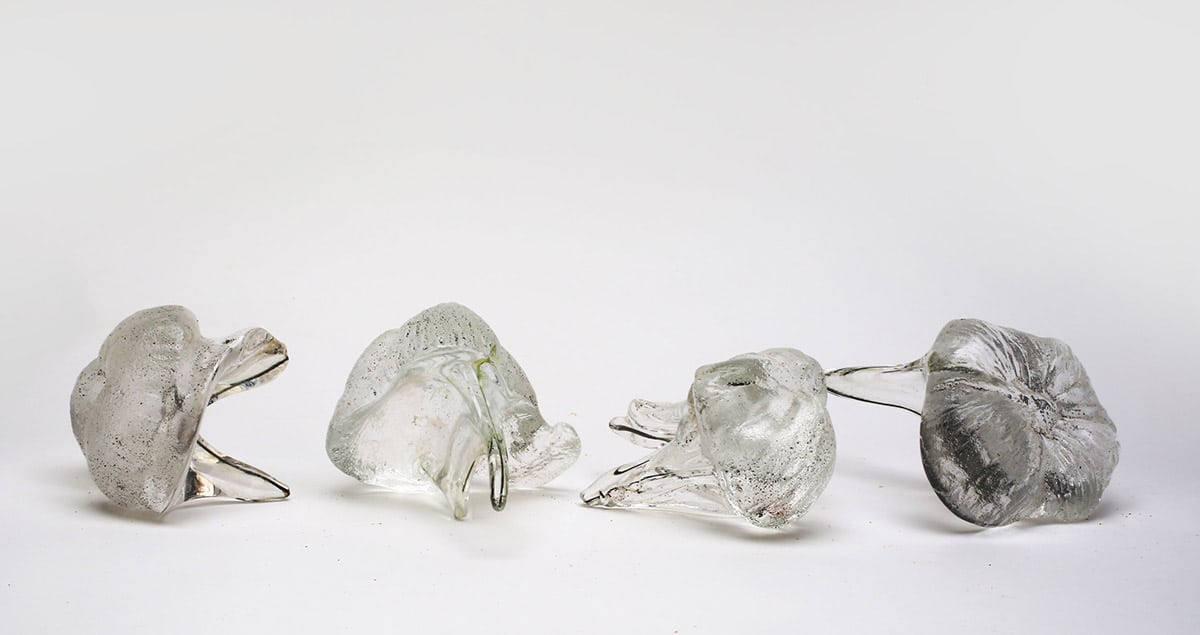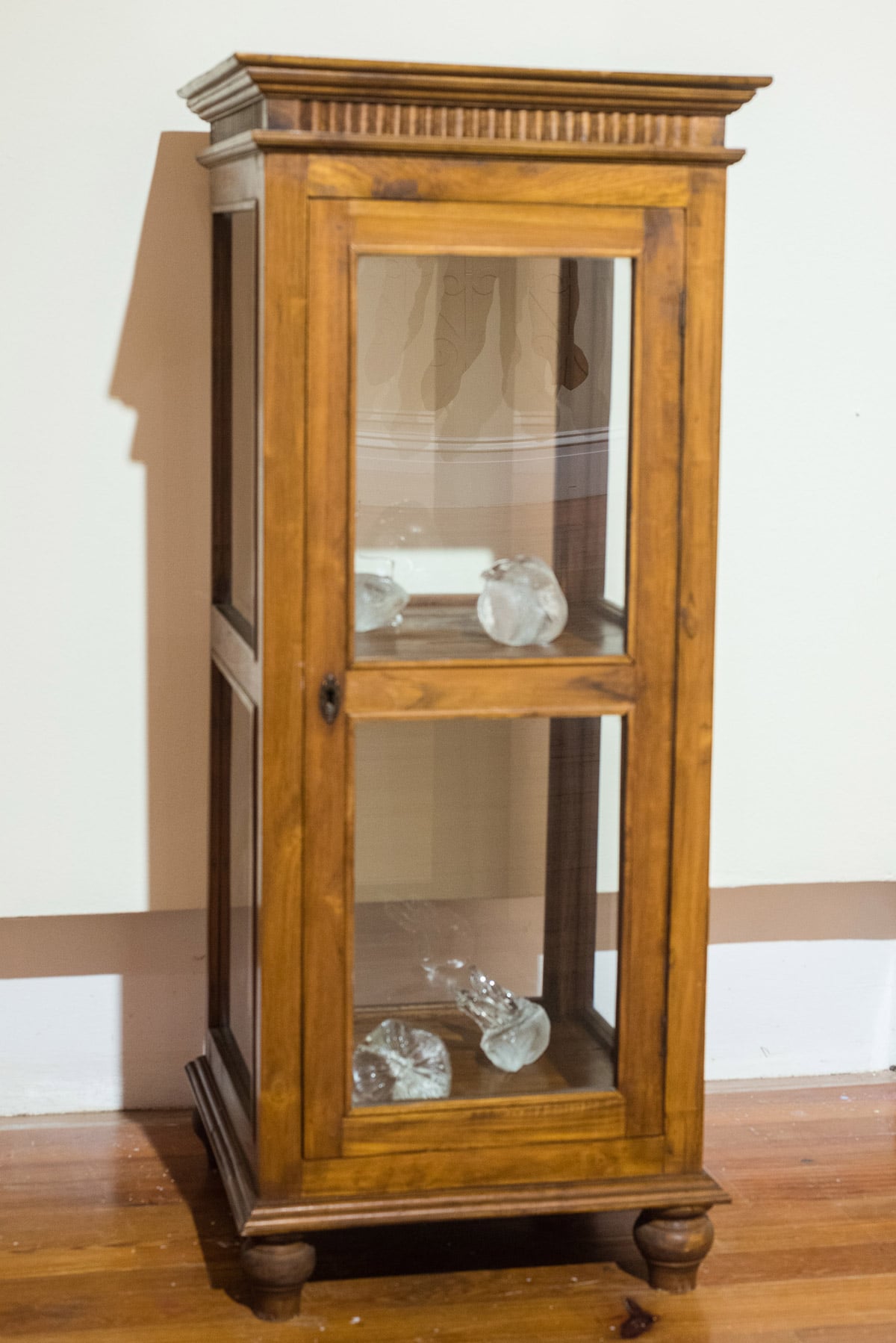
By Natalie Willis.
“i lost a whole continent.
a whole continent from my memory.
unlike all other hyphenated americans
my hyphen is made of blood.
when africa says hello
my mouth is a heartbreak
because i have nothing in my tongue
to answer her.
i don’t know how to say hello to my mother.”
― Nayyirah Waheed, “Salt”, 2013.
Anina Major’s “Wisdom Teeth” (2017) are beautiful, haunting ghosts of an imagined body – this body could be mine, yours, our ancestors, an imagined overarching representation of the body of the Caribbean personified. Teeth are universal (for most of us at least), but they are also still body parts that have distinct history and stories for many of us. As a nation built on slavery, on the backs of Blacks, with a majority-Black population despite the diversity of races and nations that build into the potcake of this peculiar place – sometimes the Black racialising of experiences is too much to move past. Funny how that happens, in places still dealing with the toxic, poisonous vestiges of slavery with racism at the bedrock of our foundations. All this to say, when we look at teeth, we can’t not look at teeth in relation to Black people.

“Wisdom Teeth” (2017), Anina Major, glass, 3 x 5 x 3 (4). Collection of the artist. Image by Dante Carrer.
Of Major’s three works contributing to the overall “Difficult Conversations” (as this series of collaborative exhibitions with the British Council within the Caribbean have been called), the “Wisdom Teeth” (2017) are perhaps some of the most unassuming. Though “Bessie’s Backbone” (2018) has a very direct, confrontational, and towering weight and presence, it isn’t just the backbone in relation to Blackness that holds that gravitas. Four “teeth” made of glass sand casts of dried coconuts with prongs from the pulling of the hot, gooey glass from its mould sit in their cabinet of curiosities. These pulled teeth speak to Major’s wish to collapse the specificity of the pain of slavery for just a moment, to draw on more widely understood pain, as a way to translate that pain to be better understood, less abstract. Major shows us that Black people descended from slave ancestors, while never having understood the reality of the trauma of the slave experience, still understand the pain in a translated way, a feeling of pulling teeth and a ripping away of those integral structures to one’s cultural origins. As displaced Africans had their culture stripped from them, we today feel the dull ache of having lost part of ourselves. Our cultural teeth were pulled, and this turn of phrase makes it easier to find the empathy and understanding for those of us who do not hold this horrid history.

Wisdom Teeth” (2017), Anina Major, glass, 3 x 5 x 3 (4). Collection of the artist. Image courtesy of the artist
Our teeth were pulled. Not just figuratively.
In light of the recent social media spotlight on the dental history of the first President of the United States of America, George Washington, we see that his mouth was not full of wooden chompers – as the largely untrue stereotype would suggest. It was, in fact, full of ivory and the teeth of enslaved Africans. George Washington had not only other people’s teeth in his mouth, but these were largely extracted from the mouths of Black bodies. It has been suggested that he may have even given his inaugural speech with the teeth of someone’s Black ancestor in his mouth.
Chew on that.
Teeth for Black people don’t get to exist as the body part. They also exist as reminders of several touchy aspects of Black history. Slaves had their teeth examined, not unlike a farmer checking the health of his horse, to judge for health – hence the image of Ghetto Priest’s mouth in Graham Fagen’s film, “The Slave’s Lament” (2015). Fagen’s work, serving as the starting point for this series of exhibitions in the region, finds it’s altered parallel in Major’s work, a Bahamian translation. Displaced coconuts replace the mouth of precious ivory-white as a resource. Major’s teeth have shifted, been plucked up, placed elsewhere, making the accounts of Washington’s mouth more sore and sordid. As the Black diaspora, we are these coconuts; we are these teeth. As Caribbeans, we are the roots of these teeth that find their sand and soil. We are people who exist between, uprooted and rooted, moved and made a new home.
It is often said of the Caribbean that our displacement is one of our defining features as a region. We are all from elsewhere, as Stuart Hall professed. “Everybody who has come to the Caribbean since then comes from elsewhere; there’s something peculiarly modern about that inability to find a long-standing origin in or continuity with the place from which you’ve come.” (“The Caribbean: A Quintessentially Modern Zone”, 2000). Except that thoughts on this are shifting, as is so fitting with this space.

Installation view of “Wisdom Teeth” (2017) as seen in “We Suffer To Remain”, a collaborative exhibition with the British Council. Image by Dante Carrer.
As we look into the scientific possibility of genetically inherited trauma and cultural memory, we can see some sense of being tied to land and place come into sharper focus. But, perhaps, more importantly, the idea that we as Caribbeans have no sense of origin is less clear-cut than it once was. The idea of the Caribbean as a space shaped by displaced Black people from the African continent, and therefore the idea that we are descended from people who are not originally from the Caribbean space – this is still very much true, but it is now complicated. Just this year we have made tremendous steps forward in the archaeobiology and anthropology of this space. A jaw bone found at Preacher’s Cave in Eleuthera has given us our first full DNA sequence of Taino indigenous Bahamians. The DNA to generate this genome came from a woman who lived over a thousand years ago (pre-Columbian), and it came from her tooth. We can no longer only define ourselves as uprooted people who made a new home; it is also being seen in studies in our genetic makeup as Caribbeans that we also come from the indigenous people here.
As a space in constant shift and flux – despite our feelings of economic and cultural stagnation – the Caribbean stays in true form with the series of paradoxes we are. We are African and European, neither and both. We are displaced, and we are rooted. Major’s works remind us of the teeth we are in mouths that can’t remember the tongues of two of our mothers.